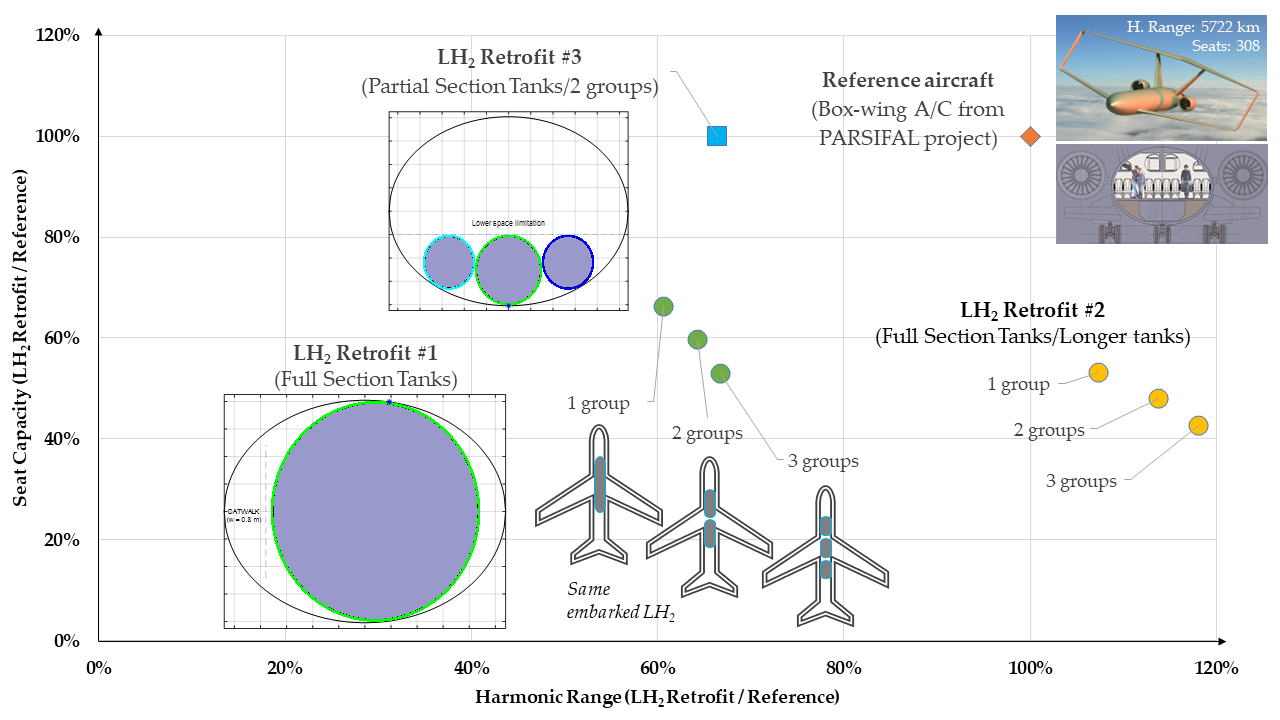The present paper deals with the investigation, at conceptual level, of the performance of short-medium-range aircraft with hydrogen propulsion. The attention is focused on the relationship between figures of merit related to transport capability, such as passenger capacity and flight range, and the parameters which drive the design of liquid hydrogen tanks and their integration with a given aircraft geometry. The reference aircraft chosen for such purpose is a box-wing short-medium-range airplane, object of study within a previous European research project called PARSIFAL, capable to cut the fuel consumption per passenger-kilometre up to 22%. By adopting a retrofitting approach, non-integral pressure vessels are sized to fit into the fuselage of the reference aircraft, under the assumption that the main aerodynamic, flight mechanic and structural characteristics are not affected. A parametric model is introduced to generate a wide variety of fuselage-tank cross-section layouts, from a single tank with the maximum diameter compatible with a catwalk corridor to multiple tanks located in the cargo deck , and an assessment work-flow is implemented to perform the structural sizing of the tanks and analyse their thermodynamic behaviour during the mission. This latter is simulated with a time-marching approach that couples the fuel request from engines with the thermodynamics of the hydrogen in the tanks, which is constantly subject to evaporation and, depending on the internal pressure, vent-ed-out in gas form. Each model is presented in detail in the paper and results are provided through sensitivity analyses to both the technology parameters of the tanks and the geometric parameters influencing their integration. The guidelines resulting from the analyses indicate that light materials, such as the Aluminium alloy AA2219 for tanks’ structure and polystyrene foam for the insulation, should be selected. Preferred values are also indicted for the aspect ratios of the vessel components, i.e. central tube and endcaps, as well as suggestions for the integration layout to be adopted depending on the desired trade-off between passenger capacity, as for the case of multiple tanks in the cargo deck, and achievable flight ranges, as for the single tank in the section.

